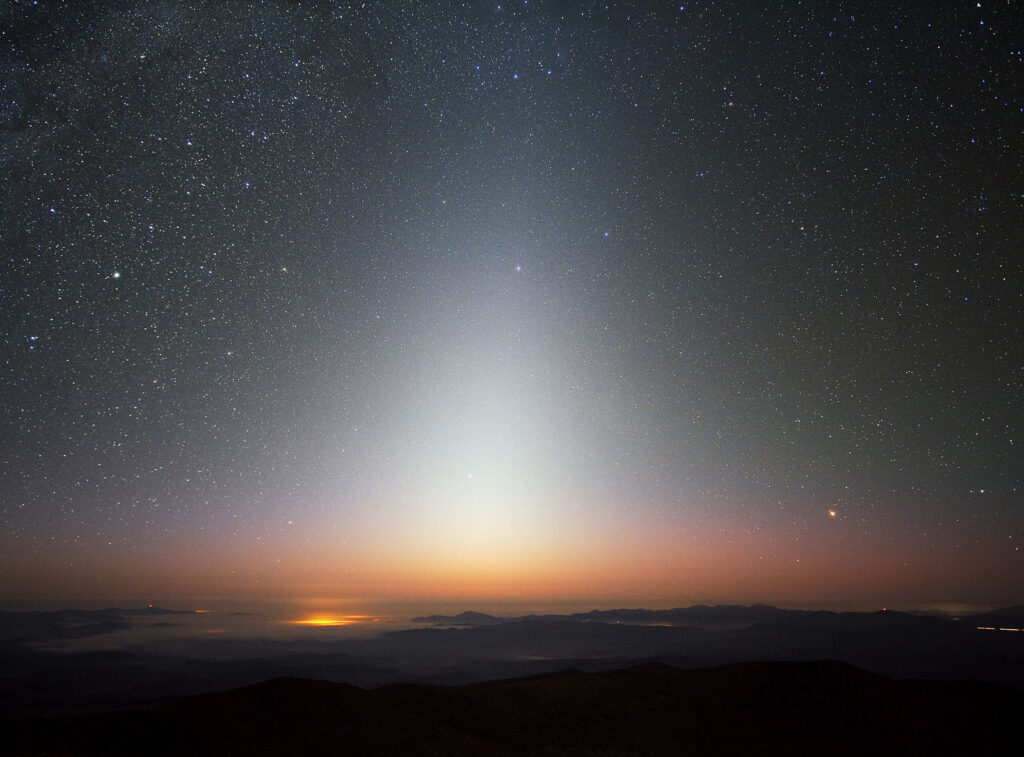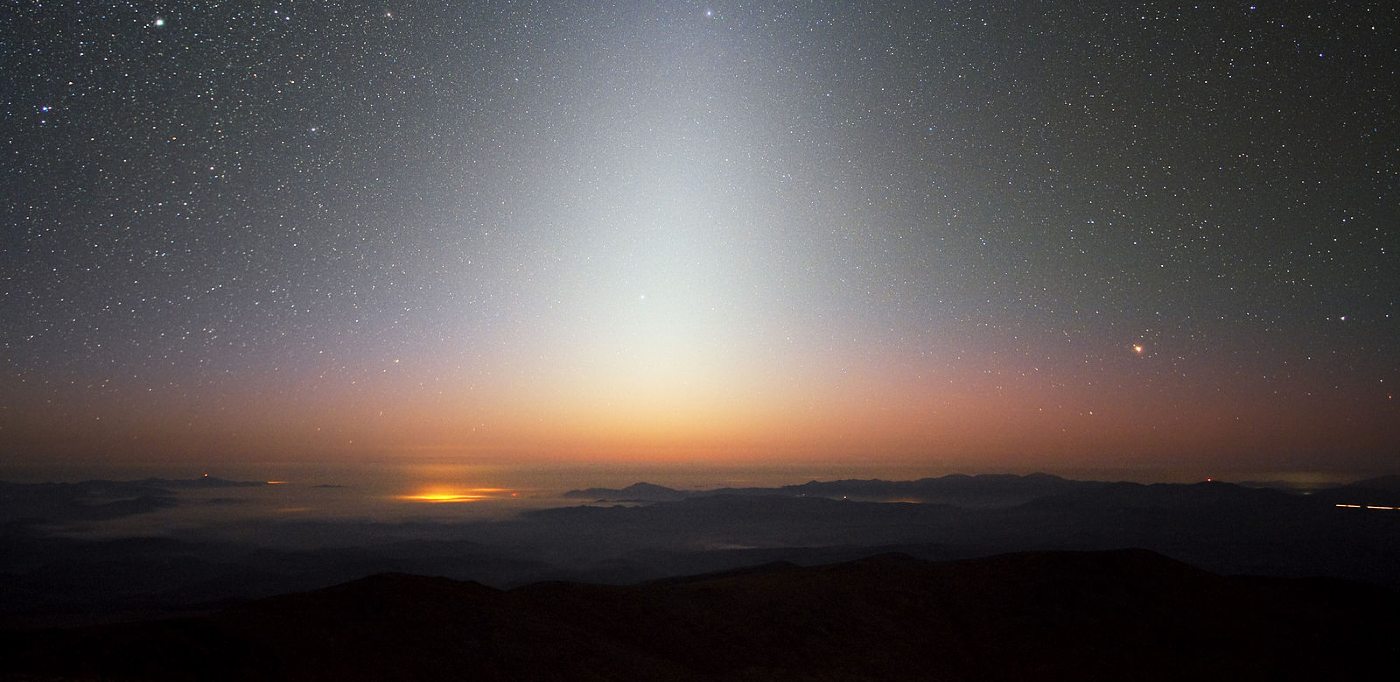Until April 13, a phenomenon that can only be sighted twice a year is occurring above our heads.
Look towards the western horizon around an hour after sunset, and if the air is clear you could see ‘zodiacal light’.

Seen in the Northern Hemisphere just after twilight, according to NASA, what we’re seeing in that faint glow is “sunlight reflected toward Earth by a cloud of tiny dust particles orbiting the Sun.”
According to the U.S. space agency, while there’s now solid evidence that Mars—the dustiest planet scientists know of—is the source of zodiacal light, it cannot yet be explained exactly how this dust “could have escaped the grip of Martian gravity.”
CHECK OUT: 50 Years Ago NASA Sent a Map Into Space to Help Aliens Find Earth—Now They’ve Got An Awesome Update
For the Royal Astronomical Society of Canada, Dr. Roy Bishop, Emeritus Professor of Physics at Acadia University, describes the celestial sight beautifully: “The zodiacal light appears as a huge, softly radiant pyramid of white light with its base near the horizon and its axis centred on the zodiac (or better, the ecliptic). In its brightest parts, it exceeds the luminance of the central Milky Way.”
Who wouldn’t want to see that? With the weather getting milder, it’s a very good time to gaze up at the night sky. Let us know if you see this particular light pillar shooting up, and good luck with your zodiacal hunt.
MORE: Scientist Thinks He Finally Knows Why People Hear Sounds Coming From the Northern Lights
P.S. There’s always the September equinox for another chance to see this special, pyramid-shaped glow.
SHARE the Bright Celestial News With Friends…




















